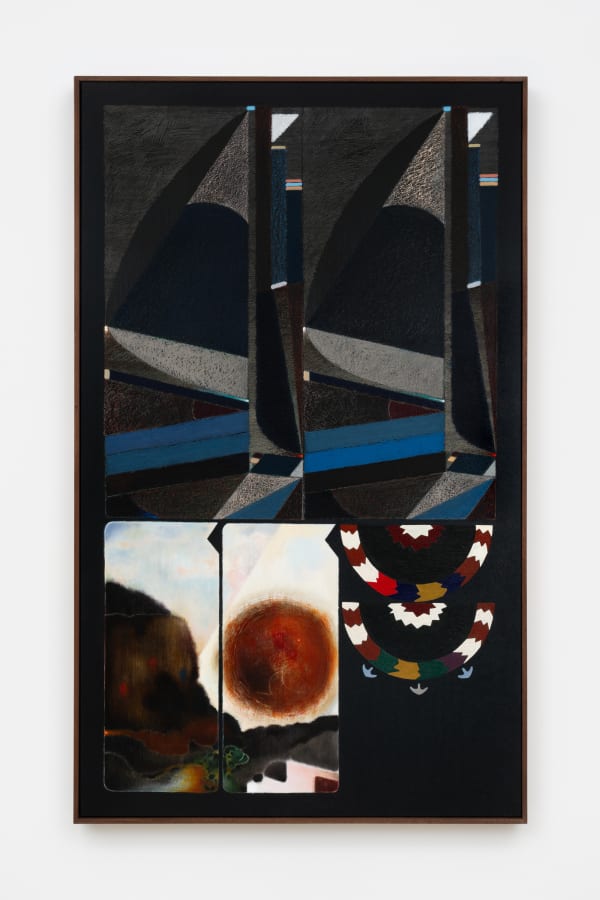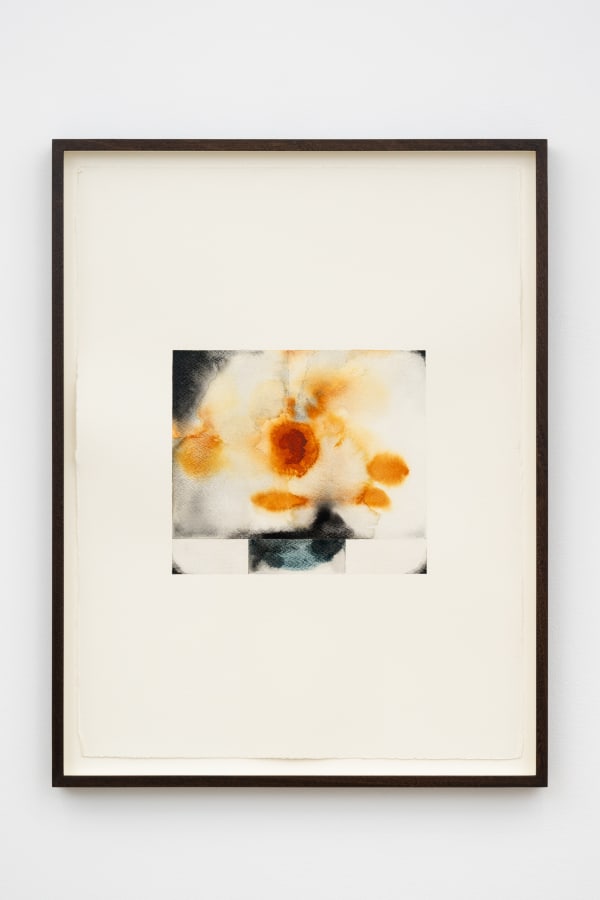Haroun Hayward: Landscape of the Vernal Equinox
Hales is delighted to announce Landscape of the Vernal Equinox, British Pakistani artist Haroun Hayward’s debut exhibition in New York. In his second solo show with Hales, Hayward continues to remix and repeat a refined visual language in search for the transcendental in painting.
Haroun Hayward (b. 1983, London) received a BA (Hons) in Fine Art Painting from University of Brighton and an MA in Fine Art Practice from Goldsmiths University, London. He lives and works in London. Hayward’s paintings are a celebration of hybridity, harmoniously converging art historical and musical references with distinct modes of making. The paintings honor what informs Hayward's personal and artistic narrative — rave culture, abstract expressionism, post war British landscape painting and his mother's textile collection. In each painting he explores multiple interplays of visual possibility in one united picture plane.
Landscape of the Vernal Equinox takes its title from a body of Paul Nash paintings, which include both a sun and a moon in the same landscape. Each of Hayward’s paintings in the show explores the elemental imagery of either a sun or moon and speaks to the spirituality of the vernal equinox as a time of reflection and renewal. Demarked detailed sections of each painting are influenced by Indian miniatures, specifically 18th century gouache paintings of tantra and yantra, which were used as a type of map for yogis to ascend. Hayward deeply relates to the idea that painting can act as a guide — a spiritual portal from the earthly realm to the astral.
Hayward has developed a set of processes for handling each section of his paintings on panel. In his largest scale works to date, he distils the imagery that defines his practice. The abstract section relates directly to electronic music, mostly acid house and Detroit techno from the 80s and 90s. Hayward describes the shapes and mark making as coming from the 'ether' — music made into visual form, creating a sense of motion in statis. The titles of works refer to a producer or record, such as Night Drive (Thru-Babylon), a 1985 Model 500 track. The formal geometry as well as the conceptual, mythic and emotive values in painting are drawn from the legacy of mid 20th century abstract expressionism in the US.
Each painting has two rectangles with cut out chevrons in the bottom left part: these unusual fragments nod to the avant-garde movement of vorticism. In this area of painterly flourish, Hayward reimagines works by post war British painters. In the works in this exhibition, he focuses on the paintings of Paul Nash and Graham Sutherland. Emulating embroidery, the bottom right section is a textural patterning, informed by Hayward's mother's expansive textile collection, mainly from South Asia and West Africa. Incredibly evocative of threads, his use of oil stick can be mistaken for fabric.
In three sets of watercolours, Hayward depicts night and day — two series refer to Beaulieu sur Mer and were developed during a recent artist residency in France. Here he paints interplays of light and nature, the landscapes and moonscapes become pure colour. In painting the same landscape multiple times, he continues to explore the idea of repetition through variation and the meditative qualities of that act of repetition. Hayward likens the variation of forms in his paintings to the practice of sampling in electronic music. For Hayward there is a congenial link between bucolic landscapes and rave culture, characterized by a search for the transcendental.
Hayward has had solo exhibitions at Hales London (2023), Entractes23, Arles (2022), indigo+madder, London (2021) and Wellington Club, London (2020). He has been included in group exhibitions at Modern Art, London; No.9 Cork Street, London; Marlborough Art Gallery, London; Public Gallery, London; French Riviera, London; Galerie Isa, Mumbai, India; Paradise Row Projects, London; AORA, London; Drawing Room, London; Rivington Rooms, London; and indigo+madder, London amongst others. He is the collections of the Gujral Foundation, Kiran Nadar Collection, Arun Nayar Collection, Soho House Collection among others. His work has been written about in frieze magazine, the New York Times, Artforum, the Art Newspaper, and Architectural Digest.



















